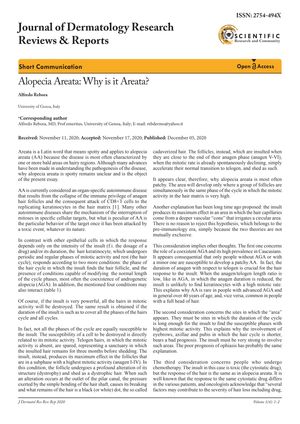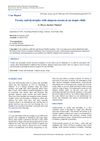Alopecia Areata: Why Is It Areata?
December 2020

TLDR The paper concludes that the patchiness of alopecia areata is likely due to when the immune attack happens in the hair growth cycle.
The paper "Alopecia Areata: Why is it Areata?" explores the reasons behind the patchy nature of alopecia areata (AA), an autoimmune disease where CD8+T cells attack replicating keratinocytes in the hair matrix. The author suggests that the patchiness is due to the phase of the hair cycle during which the immune insult occurs, with the highest susceptibility in the anagen I-IV subphase where mitotic activity is greatest. Telogen hairs are spared due to their lack of mitotic activity. The paper also discusses the influence of androgenetic alopecia (AGA) on AA, noting that individuals with AGA or those over 40 years old are less likely to develop AA due to a lower anagen/telogen length ratio. The paper posits that the response to hair loss from chemotherapy varies among individuals due to differences in the hair cycle phases, with those having a full head of hair more likely to experience total hair loss. The author also raises the possibility that in cases where the scalp conditions are not ideal for patchy AA due to AGA, the shedding may be diffuse and telogenic, potentially corresponding to what is termed autoimmune telogen effluvium or alopecia areata incognita.
